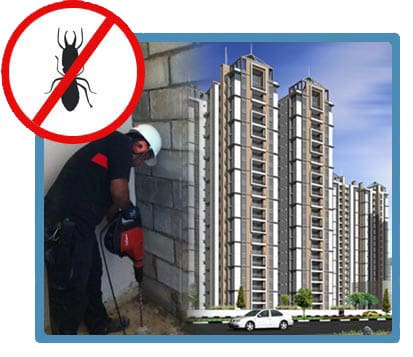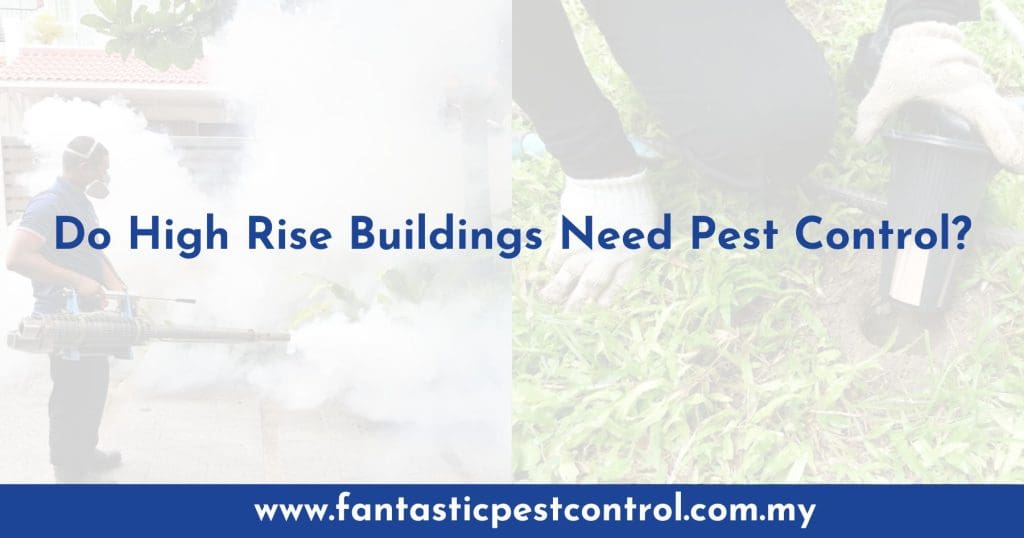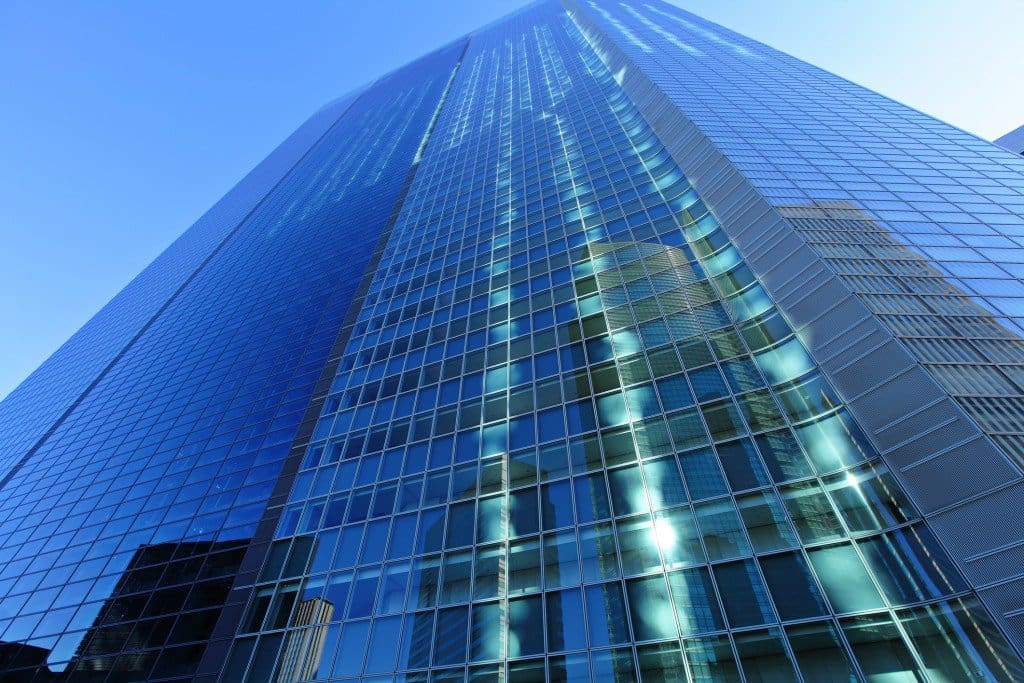If you live or work in a high-rise building, you may have encountered some unwanted visitors in the form of pests. From ants to bed bugs, these pesky creatures can wreak havoc on your living or working space. In this article, we will explore the challenges of pest control in high-rise buildings and provide you with effective solutions to keep these pests at bay. Whether you’re a tenant or a building manager, this article will equip you with the knowledge and tools to maintain a pest-free environment in your high-rise building.

1. Importance of Pest Control in High-Rise Buildings
High-rise buildings play a significant role in our urban landscape, providing a convenient and comfortable living space for many people. However, these towering structures also attract unwanted guests in the form of pests. Effective pest control in high-rise buildings is crucial for several reasons, including preventing infestations, addressing health and safety concerns, and protecting property value.
1.1 Preventing Infestations
One of the primary reasons for implementing pest control measures in high-rise buildings is to prevent infestations. Pests, such as cockroaches, bed bugs, rodents, ants, and termites, are attracted to the abundance of food and shelter available in these buildings. If left uncontrolled, these pests can reproduce rapidly, leading to a full-blown infestation that can spread throughout the building. An infestation not only causes inconvenience to the residents but also poses serious health risks. Therefore, regular pest control measures are necessary to ward off these unwanted invaders.
1.2 Health and Safety Concerns
Pests in high-rise buildings can significantly impact the health and safety of the residents. Cockroaches, for example, carry pathogens that can cause diseases like salmonella and gastroenteritis. Bed bugs can cause itchy bites and disrupt sleep, leading to physical and emotional distress. Rodents can damage electrical wiring and pose a fire hazard, while ants can contaminate food and surfaces. Additionally, termite infestations can weaken the structural integrity of the building. By prioritizing pest control in high-rise buildings, you can minimize the risks associated with these pests and ensure the well-being of residents.
1.3 Protecting Property Value
Investing in pest control measures is also vital for preserving the value of high-rise buildings. Pests can cause extensive damage to property, including furniture, walls, and infrastructure. The presence of pests can make the building less attractive to potential buyers or renters, ultimately leading to a decrease in property value. Regular pest control not only prevents property damage but also enhances the overall desirability and marketability of high-rise buildings. By maintaining a pest-free environment, you can protect your investment and ensure a higher return in the long run.
2. Common Pests in High-Rise Buildings
High-rise buildings provide a perfect habitat for various pests that thrive in urban environments. Here are some of the common pests encountered in these tall structures:
2.1 Cockroaches
Cockroaches are among the most common pests found in high-rise buildings. These resilient creatures can survive in various conditions and breed rapidly. They are attracted to food waste, dark and humid spaces, and small cracks and crevices. Cockroaches not only pose health risks but can also leave an unpleasant odor and allergens in their wake.
2.2 Bed Bugs
Bed bugs are notorious for causing sleepless nights and itchy bites. These tiny parasites hide in cracks and crevices, including mattresses, upholstered furniture, and electrical outlets. They feed on blood and are usually transported through luggage, clothing, or used furniture. Bed bug infestations can quickly spread throughout a high-rise building if not addressed promptly.
2.3 Rodents
Rodents, such as rats and mice, are highly adaptable and agile pests that can squeeze through small openings and scale heights effortlessly. They are carriers of diseases and can contaminate food and surfaces with their urine and droppings. Rodents can also chew through wires, insulation, and other building materials, posing a significant fire hazard.
2.4 Ants
Ants are a common nuisance in high-rise buildings, especially in urban areas. They are attracted to food particles, particularly sweet and greasy substances, and can quickly establish large colonies within the building. While most ant species are harmless, some can bite or sting, causing discomfort and potential allergic reactions.
2.5 Termites
Termites are extremely destructive pests that can silently wreak havoc on the structural integrity of high-rise buildings. They feed on wood and other cellulose materials, causing extensive damage behind walls, ceilings, and floors. Termite infestations can be difficult to detect and can lead to costly repairs if left untreated.

3. Hiring Professional Pest Control Services
When it comes to managing pests in high-rise buildings, it is essential to hire professional pest control services. These experts have the knowledge, experience, and tools to effectively address pest infestations and prevent future problems.
3.1 Benefits of Professional Pest Control
There are several benefits to hiring Professional pest control services for high-rise buildings. Firstly, professionals have a deep understanding of different pests and their behavior, allowing them to implement targeted and effective treatment strategies. They can identify the source of infestations, determine the extent of the problem, and develop customized solutions to eradicate pests. Additionally, professional pest control services often offer long-term solutions, preventing recurring infestations and reducing the need for frequent treatments.
3.2 Factors to Consider When Choosing a Pest Control Company
When selecting a pest control company for your high-rise building, there are several factors to consider. Firstly, ensure that the company is licensed and certified to perform pest control services in your area. This ensures that they possess the necessary knowledge and expertise to handle pest problems safely and effectively. It is also important to inquire about the company’s experience in dealing with high-rise buildings specifically, as the challenges and complexities may differ from other types of structures. Finally, consider reading reviews and testimonials from previous clients to gauge the company’s reputation and customer satisfaction level.
4. Integrated Pest Management (IPM) Strategies
Integrated Pest Management (IPM) is an approach to pest control that focuses on ecological balance, proactive prevention, and minimal use of chemicals. It emphasizes the integration of multiple strategies to achieve long-term pest control while minimizing risks to human health and the environment. Here are the key components of IPM strategies for high-rise buildings:
4.1 Inspection and Monitoring
Thorough inspection and monitoring are essential in identifying existing pest problems and potential vulnerabilities. Regular inspections help catch infestations at an early stage, allowing for timely intervention. Monitoring techniques may include the use of traps, surveillance cameras, and data analysis to assess pest activity and population trends. These observations drive decision-making and treatment plans.
4.2 Pest Exclusion and Sealing
Preventing pests from entering the building is a fundamental aspect of IPM. Sealing entry points, such as gaps around windows, doors, and utility lines, helps deny pests access to the interior. Weatherstripping and door sweeps can be installed to create a tight seal. Regular maintenance and repairs should also be carried out to ensure structural integrity and prevent potential pest entryways.
4.3 Sanitation and Hygiene
Maintaining proper sanitation and hygiene practices is crucial for pest management in high-rise buildings. Regular cleaning of common areas, garbage disposal, and waste management are essential to eliminate favorable conditions for pests. Encouraging residents to clean their living spaces regularly and dispose of trash properly can significantly contribute to preventing infestations.
4.4 Chemical and Biological Control
Chemical and biological control methods should be used selectively and strategically in an IPM approach. These methods include the use of appropriately registered insecticides, bait stations, and microbial agents that target specific pests. Integrated pest control professionals have the knowledge and expertise to determine the most effective and least harmful chemicals to use, minimizing risks to residents and the environment.
4.5 Education and Communication
Education and communication play a vital role in a successful IPM program. Building management should provide information and resources to educate residents about pest control measures, prevention techniques, and the importance of reporting pest sightings promptly. Open communication channels between residents and building management allow for quick action in addressing concerns and preventing the spread of infestations.
5. Preventive Measures for Pest Control in High-Rise Buildings
Prevention is key when it comes to managing pests in high-rise buildings. By implementing preventive measures, building management and residents can significantly reduce the risk of infestations. Here are some preventive measures to consider:
5.1 Proper Waste Management
Proper waste management is crucial in preventing pests from finding a food source within the building. Building management should ensure that garbage collection and disposal systems are efficient, with regular collection schedules and proper waste containers. Residents should be educated about the importance of disposing of food waste properly and not leaving it exposed in common areas.
5.2 Regular Cleaning and Maintenance
Regular cleaning and maintenance routines are essential in maintaining a pest-free environment. Common areas should be cleaned thoroughly and regularly, paying attention to areas where food particles may accumulate. Residents should also be encouraged to clean their living spaces regularly, including frequently vacuuming carpets and upholstery, as well as wiping down surfaces.
5.3 Sealing Entry Points
Sealing entry points is an effective way to prevent pests from entering the building. Gaps around windows, doors, utility lines, and vents should be sealed with caulk or weatherstripping. Regular inspections of the building’s exterior should be conducted to identify and repair any potential entryways.
5.4 Restricting Access to Food Sources
Pests are often attracted to readily available food sources within the building. Building management should take steps to limit access to food by implementing proper storage and handling practices. Encouraging residents to store food in sealed containers and promptly cleaning up spills can help deter pests.
5.5 Installing Pest Repellents
Installing pest repellents can provide an additional layer of protection against pests. This can include ultrasonic devices that emit high-frequency sound waves or light traps that attract and capture flying insects. However, it is important to note that these devices may have varying degrees of effectiveness, and professional advice should be sought when considering their use.
6. Case Study: Successful Pest Control Implementation in a High-Rise Building
Understanding how pest control strategies can be effectively implemented in high-rise buildings is crucial for building management. Let’s consider a case study that highlights a successful pest control implementation:
6.1 Background Information
XYZ Towers is a 30-story high-rise building located in a bustling metropolitan area. The building houses hundreds of residents across its residential units and commercial spaces. Due to its central location, the building has faced ongoing challenges with pests, including cockroaches and rodents. Residents frequently reported sightings of these pests, raising concerns about health and property damage.
6.2 Pest Control Strategy
Building management decided to implement a comprehensive IPM strategy to address the pest issues at XYZ Towers. They hired a professional pest control company that specialized in high-rise buildings. The strategy included regular inspections and monitoring to identify pest hotspots and track population trends. Pest exclusion measures, such as sealing entry points and repairing cracks, were implemented to prevent pests from entering the building. Sanitation and hygiene practices were reinforced through regular cleaning, waste management, and educating residents about proper food handling and trash disposal.
6.3 Results and Benefits
After implementing the pest control strategy, XYZ Towers saw a significant reduction in pest sightings and complaints. Regular inspections allowed for early detection and prompt intervention, preventing infestations from spreading. Sealing entry points and implementing proper sanitation practices kept pests at bay. Residents reported an improved living environment, free from pests, and expressed satisfaction with the proactive approach taken by building management. Property value was also positively impacted, as a pest-free environment increased desirability and marketability for potential buyers and renters.

7. Legal and Regulatory Considerations for Pest Control in High-Rise Buildings
Pest control in high-rise buildings must comply with local laws and regulations. Building management should ensure that they are familiar with these requirements to avoid any legal and regulatory challenges. Here are some considerations to keep in mind:
7.1 Compliance with Local Laws and Regulations
Each jurisdiction may have specific laws and regulations regarding pest control in high-rise buildings. These can include guidelines on the use of chemicals, licensing requirements, and waste management regulations. Building management should consult local authorities and ensure compliance with these regulations to avoid penalties and legal issues.
7.2 Pest Control Certifications and Licenses
When hiring a pest control company, it is essential to check for certifications and licenses. Qualified pest control professionals should possess the necessary certifications and licenses required by local authorities. These certifications demonstrate that the company has the expertise and skills to handle pest control safely and effectively. Verifying these credentials is a critical step in ensuring that the pest control company meets legal and regulatory requirements.
8. Tips for Residents to Prevent Pest Infestations
Residents of high-rise buildings also play a crucial role in preventing pest infestations. Implementing simple preventive measures can contribute to a pest-free living environment. Here are some tips for residents to consider:
8.1 Regular Cleaning and Maintenance of Living Spaces
Residents should prioritize regular cleaning and maintenance of their living spaces. This includes sweeping, vacuuming, and wiping down surfaces regularly. It is important to pay attention to areas where pests may hide, such as behind appliances and in corners. By eliminating potential hiding spots and food sources, residents can significantly reduce the risk of attracting pests.
8.2 Reporting Suspected Infestations to Building Management
Residents should promptly report any suspected pest infestations to building management. Early reporting allows for swift action and prevents infestations from spreading to neighboring units. Communication channels should be established to facilitate reporting and ensure that residents’ concerns are addressed promptly.
8.3 Proper Food Storage and Disposal
Residents should practice proper food storage and disposal techniques to deter pests. This includes storing food in sealed containers and promptly cleaning up spills or crumbs. Trash should be properly sealed and disposed of in designated containers, following building management’s waste management guidelines.
8.4 Educating Residents about Pest Control Measures
Building management should proactively educate residents about pest control measures and prevention techniques. This can be achieved through informative newsletters, bulletin boards, or community events. By creating awareness, residents can actively contribute to maintaining a pest-free living environment.

9. Product Reviews: Recommended Pest Control Products for High-Rise Buildings
In addition to professional pest control services, residents and building management can consider using pest control products to complement their efforts. Here are some recommended pest control products for high-rise buildings:
9.1 Pest Repellents
- Ultrasonic Pest Repellent: These devices emit high-frequency sound waves that deter pests without causing harm to humans or pets.
- Essential Oil Based Repellents: Natural repellents made from essential oils, such as peppermint or tea tree oil, can help repel certain pests like ants and spiders.
9.2 Traps and Baits
- Roach Traps: Sticky traps specifically designed to capture and eliminate cockroaches.
- Mouse Traps: Snap or glue traps designed to catch and eliminate mice.
9.3 Insecticides and Pesticides
- Residual Insecticide: Long-lasting insecticides that are applied to cracks and crevices to eliminate crawling insects.
- Pesticide Dust: Dust formulations containing insecticides that can be applied to voids and other spaces where pests hide.
It is important to carefully read and follow the instructions provided by the manufacturers when using these products. If uncertain, seeking professional advice is recommended.
10. Conclusion
Pest control in high-rise buildings is essential for maintaining a healthy and comfortable living environment. By implementing preventive measures, hiring professional pest control services, and utilizing effective pest control products, residents and building management can successfully prevent and address pest infestations. Prioritizing pest control also helps protect property value and ensures the well-being of residents. By adopting an integrated approach and complying with legal and regulatory requirements, high-rise buildings can remain pest-free and provide a safe haven for all who reside within their walls.

I am Randy, the author behind PestControld.com. Drawing from decades of experience, I aim to provide valuable insights, expert advice, and practical recommendations to help you make informed decisions when assessing viable pest control solutions.